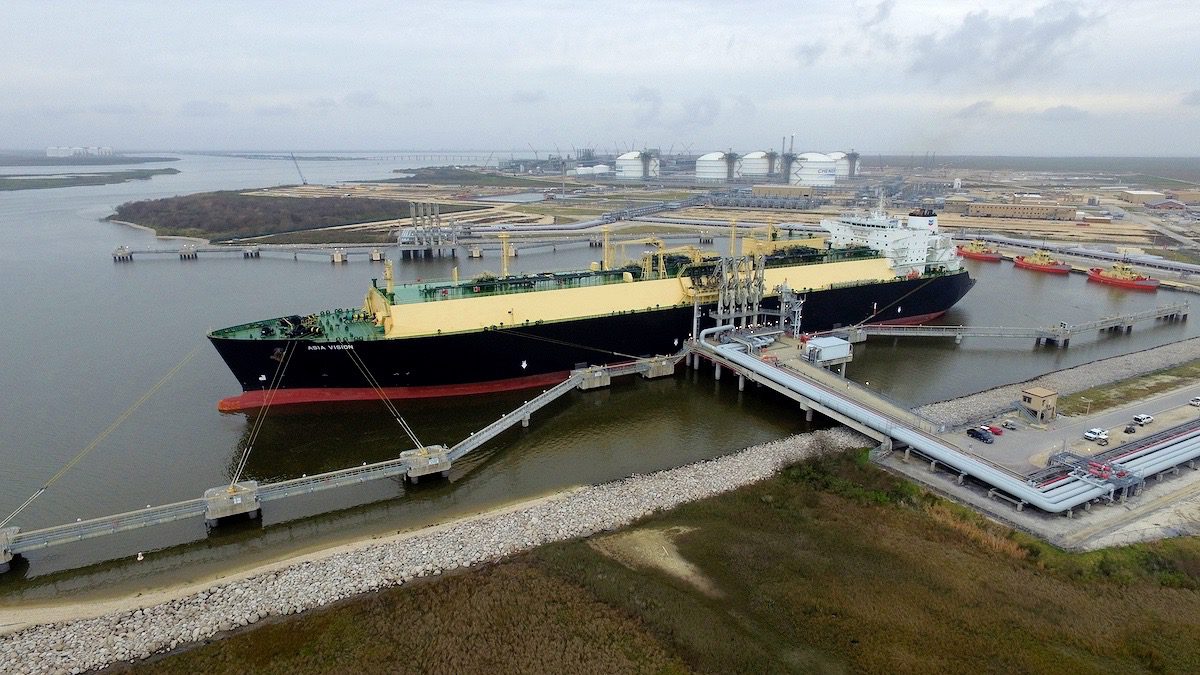Loading of the first commissioning cargo at the Sabine Pass LNG Terminal in February 2016. File photo: Cheniere Energy
 Sept 18 (Reuters) – China has set a 10 percent tariff on imports of U.S. liquefied natural gas just as trade of the super-chilled fuel between the two nations started to ramp up and exports from new terminals on the U.S. Gulf Coast are poised to begin.
Sept 18 (Reuters) – China has set a 10 percent tariff on imports of U.S. liquefied natural gas just as trade of the super-chilled fuel between the two nations started to ramp up and exports from new terminals on the U.S. Gulf Coast are poised to begin.
Beijing announced on Tuesday it would tax thousands of U.S. products worth $60 billion in retaliation for tariffs imposed by U.S. President Donald Trump as the trade war between them escalated.
China became the world’s second-largest importer of LNG last year, behind Japan and ahead of South Korea, driven by a push to convert to cleaner gas from coal generation energy.
At the same time, the United States is poised to become a major exporter with the majority of LNG supply growth in coming years from new terminals being planned or built now.
China imported 1.6 million tonnes of the 14.9 million tonnes of LNG that has been exported from the United States so far this year, according to Thomson Reuters data.
Analysts and traders have said that although China is a huge buyer of LNG especially in the run-up to and during winter, it should easily find supplies from other large exporters such as Qatar and Australia.
State-owned Qatargas said this month it had signed a 22-year deal to supply a unit of PetroChina with 3.4 million tonnes a year.
Panama Canal Head Expects Fewer China, U.S. Ships if Trade War Escalates
For U.S. companies developing LNG export terminals such as Cheniere Energy, Sempra and Kinder Morgan , the tariff casts doubt over their projects’ final investment decisions (FIDs), which trigger construction of facilities.
“It’s a problem for Cheniere as it makes their LNG uncompetitive in China,” Noel Tomnay, vice president for gas and LNG consulting at Wood Mackenzie, told Reuters on the sidelines of an industry event in Barcelona, Spain.
“But the biggest problem is for all those U.S. LNG projects trying to get FID. China would be the biggest market for all of them. While these tariffs last, it’s unlikely they can take off. That’s a potential opportunity for non-U.S. projects (e.g. Canada) to go ahead.”
Four new U.S. terminals and one extension will come onstream in stages over the next two years. Once they run at capacity, they will constitute 60 percent of all new supplies expected to be added to the global market by 2023.
Aside from that, there are dozens of new trains, or facilities, planned at existing or new terminals, which all need FIDs before they progress. (Reporting by Sabina Zawadzki in London and Henning Gloystein in Barcelona; Editing by Dale Hudson)
(c) Copyright Thomson Reuters 2018.

 Join The Club
Join The Club











